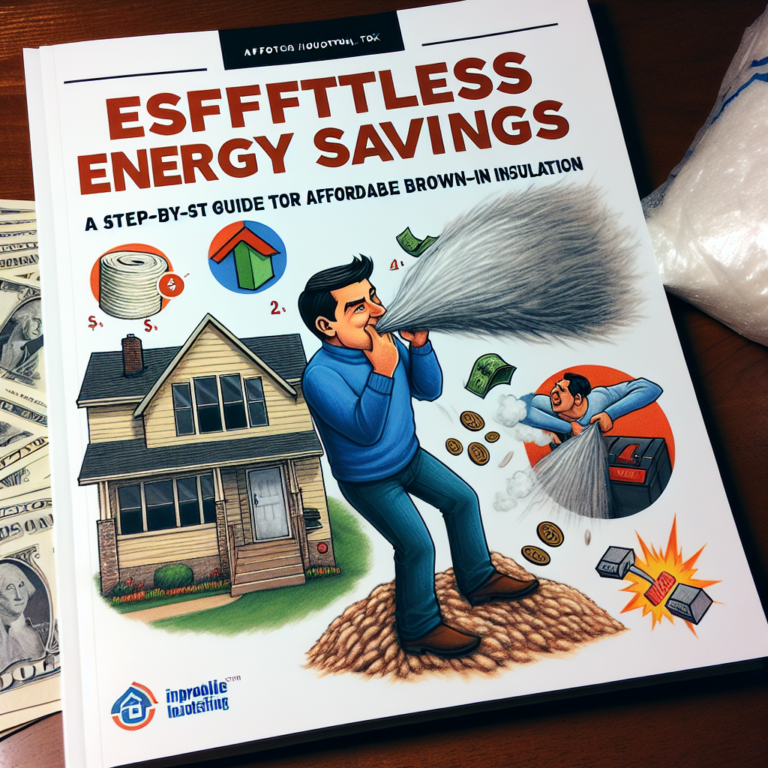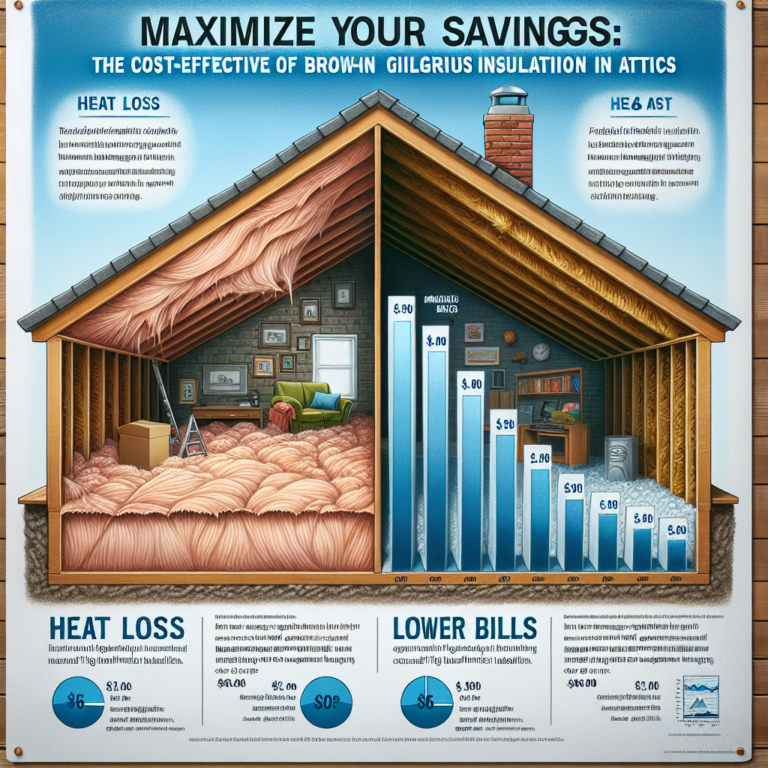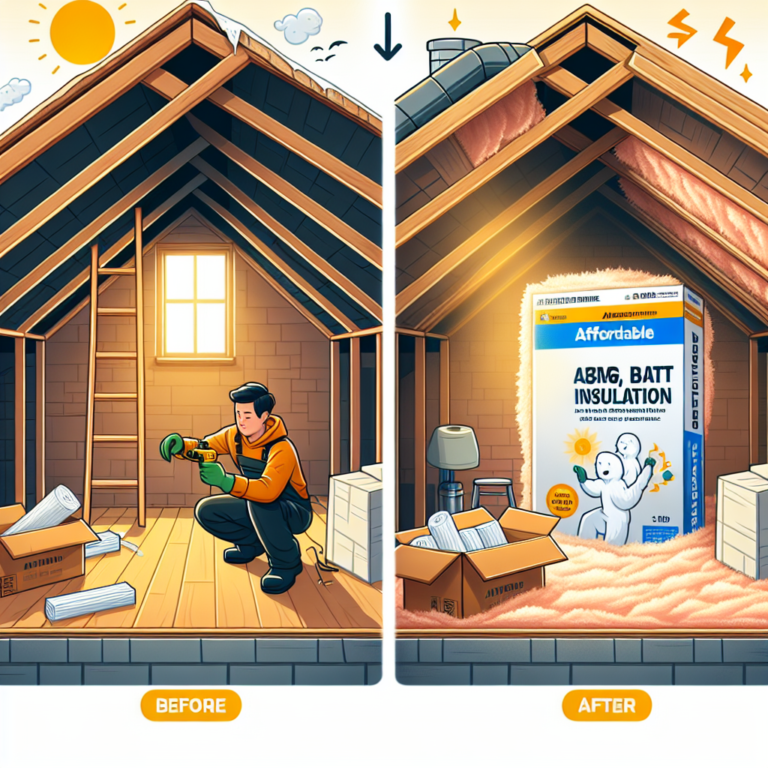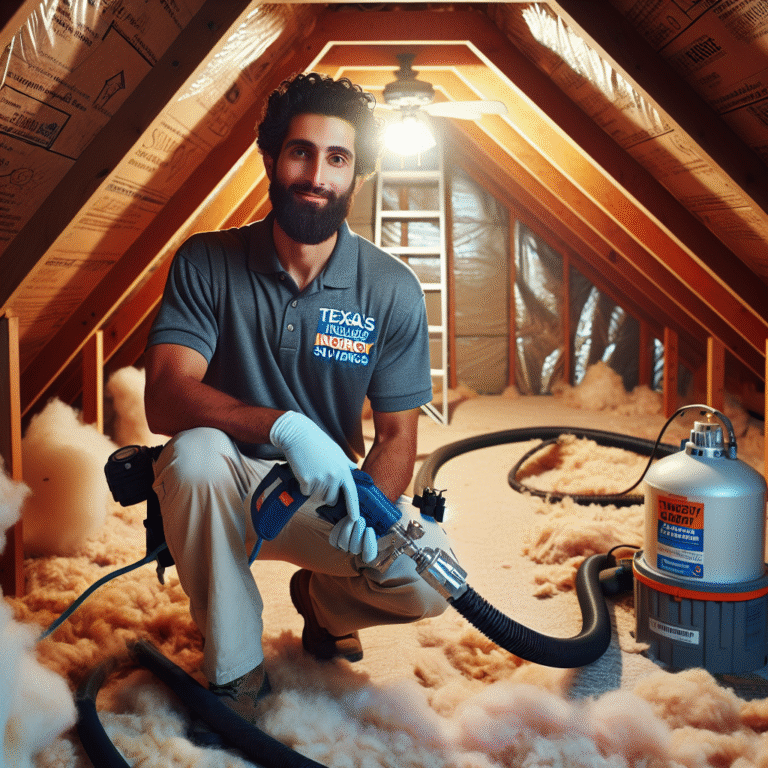-
Table of Contents
“Efficient insulation, affordable cost – foam blown insulation for your home.”
Introduction
Foam blown insulation is a popular choice for homeowners looking to improve the energy efficiency of their homes. It is a type of insulation that is sprayed or injected into walls, attics, and other areas to create a barrier against heat loss. While it offers many benefits, one of the main considerations for homeowners is the cost of foam blown insulation. In this introduction, we will discuss the factors that can affect the cost of foam blown insulation and provide an overview of the average cost for this type of insulation.
The Cost-Effectiveness of R49 Blown Insulation for Your Home
When it comes to insulating your home, there are many options available in the market. From traditional fiberglass batts to spray foam insulation, each type has its own benefits and drawbacks. However, one type of insulation that has been gaining popularity in recent years is blown insulation, specifically r49 blown insulation.
r49 blown insulation is a type of foam blown insulation that is made up of tiny foam particles that are blown into the walls, attic, or crawl space of a home. This type of insulation is known for its high R-value, which is a measure of its thermal resistance. The higher the R-value, the better the insulation is at keeping heat in during the winter and out during the summer.
One of the main factors that homeowners consider when choosing insulation for their homes is the cost. And when it comes to r49 blown insulation, the cost can vary depending on several factors. These factors include the size of your home, the type of insulation material used, and the labor costs in your area.
On average, the cost of r49 blown insulation can range from $1.50 to $3.50 per square foot. This means that for a 1,500 square foot home, the cost of insulation can range from $2,250 to $5,250. This may seem like a significant investment, but when compared to other types of insulation, r49 blown insulation can actually be more cost-effective in the long run.
One of the reasons for this is the high R-value of r49 blown insulation. With an R-value of 49, this type of insulation can provide better thermal resistance compared to other types of insulation. This means that your home will be better insulated, resulting in lower energy bills. In fact, according to the Department of Energy, homeowners can save up to 20% on their heating and cooling costs by properly insulating their homes.
Moreover, r49 blown insulation is known for its durability and longevity. Unlike traditional fiberglass batts, which can compress over time and lose their effectiveness, blown insulation maintains its shape and R-value for many years. This means that you won’t have to worry about replacing or adding more insulation in the future, saving you money in the long run.
Another factor that contributes to the cost-effectiveness of r49 blown insulation is its installation process. Unlike other types of insulation that require extensive labor and can be time-consuming, blown insulation can be installed quickly and efficiently. This means that you won’t have to spend a significant amount of money on labor costs, making it a more affordable option.
Additionally, r49 blown insulation is known for its ability to fill in small gaps and crevices, providing better coverage and reducing the chances of air leaks. This can also result in lower energy bills as your HVAC system won’t have to work as hard to maintain a comfortable temperature in your home.
In conclusion, while the initial cost of r49 blown insulation may seem higher compared to other types of insulation, its long-term cost-effectiveness makes it a worthwhile investment. With its high R-value, durability, and efficient installation process, r49 blown insulation can help you save money on energy bills and provide a more comfortable living environment for you and your family. So if you’re looking to insulate your home, consider r49 blown insulation as a cost-effective option.
Maximizing Energy Efficiency with R49 Blown Insulation: A Cost Analysis
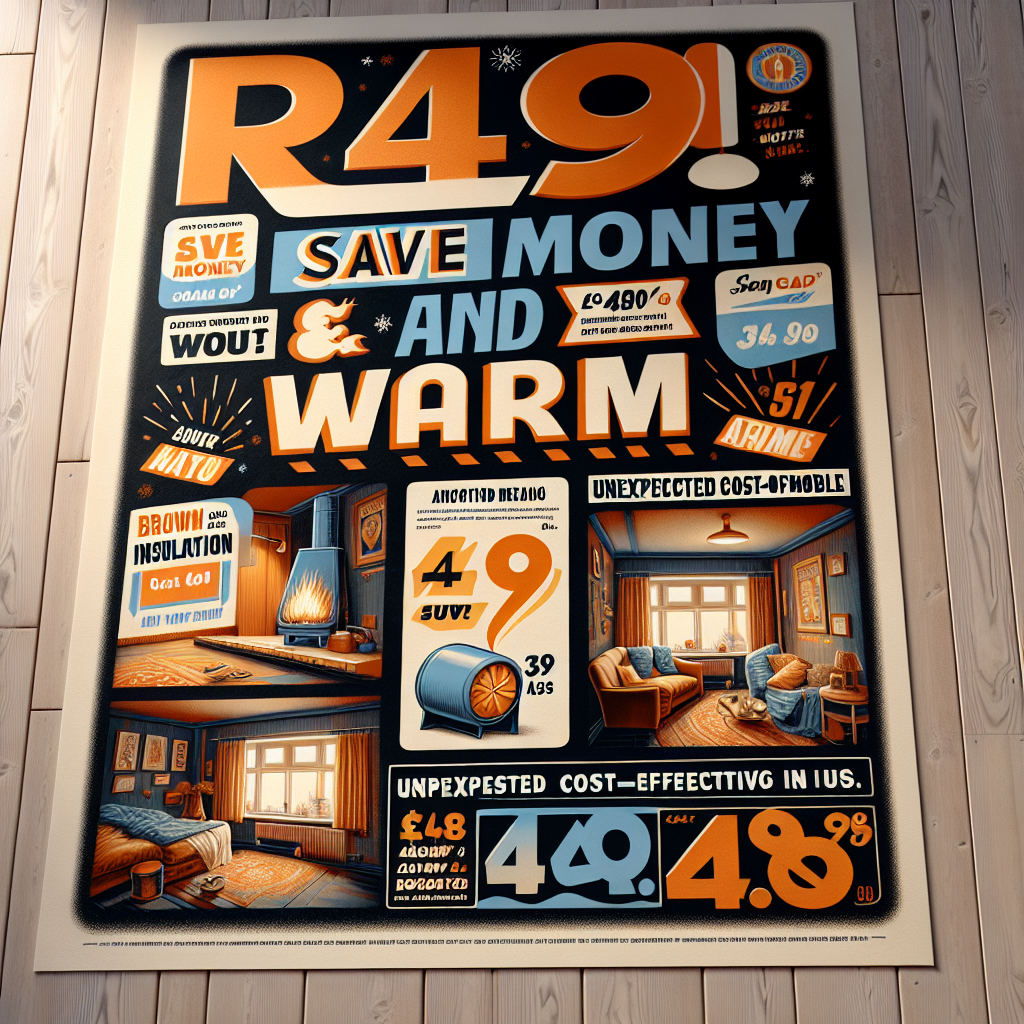
In today’s world, energy efficiency has become a top priority for homeowners. With rising energy costs and a growing concern for the environment, people are constantly looking for ways to reduce their energy consumption and save money. One effective way to achieve this is by using blown insulation, specifically r49 blown insulation. This type of insulation is known for its high R-value, which measures the insulation’s ability to resist heat flow. In this article, we will explore the cost of r49 blown insulation and how it can help maximize energy efficiency in your home.
First and foremost, it is important to understand what r49 blown insulation is and how it differs from other types of insulation. r49 blown insulation is a type of foam insulation that is made up of tiny foam particles. These particles are blown into the desired space using a special machine, filling every nook and cranny and creating a seamless layer of insulation. This method of installation allows for a more thorough coverage and eliminates any gaps or voids that may occur with other types of insulation.
Now, let’s dive into the cost of r49 blown insulation. The cost of blown insulation can vary depending on several factors such as the size of the space, the type of insulation used, and the location of the property. On average, the cost of r49 blown insulation can range from $1.50 to $3.50 per square foot. This may seem like a significant investment, but the long-term benefits far outweigh the initial cost.
One of the main advantages of r49 blown insulation is its high R-value. With an R-value of 49, this type of insulation provides superior thermal resistance, meaning it can effectively keep your home warm in the winter and cool in the summer. This translates to significant energy savings as your heating and cooling systems will not have to work as hard to maintain a comfortable temperature. In fact, studies have shown that using r49 blown insulation can reduce energy costs by up to 50%.
Moreover, r49 blown insulation is also known for its durability and longevity. Unlike traditional insulation materials such as fiberglass or cellulose, foam insulation does not settle or compress over time. This means that it will maintain its R-value and effectiveness for many years to come, making it a worthwhile investment in the long run.
Another factor to consider when looking at the cost of r49 blown insulation is the potential savings on your utility bills. As mentioned earlier, this type of insulation can significantly reduce energy costs. This means that over time, the savings on your utility bills can offset the initial cost of installation. Additionally, using r49 blown insulation can also increase the value of your home. With energy efficiency becoming a top priority for homebuyers, having high-quality insulation can make your property more attractive and potentially increase its resale value.
In conclusion, while the cost of r49 blown insulation may seem high at first, it is a worthwhile investment for maximizing energy efficiency in your home. With its high R-value, durability, and potential savings on energy costs, it is a cost-effective solution in the long run. Additionally, using r49 blown insulation can also have a positive impact on the environment by reducing energy consumption. So, if you are looking to make your home more energy-efficient, consider investing in r49 blown insulation and reap the benefits for years to come.
Breaking Down the Numbers: Understanding the Cost of R49 Blown Insulation for Your Attic
When it comes to insulating your home, there are many options available. One popular choice is foam blown insulation, specifically r49 blown insulation for attics. This type of insulation is known for its high R-value, which measures the insulation’s ability to resist heat flow. But with any home improvement project, cost is always a factor. In this article, we will break down the numbers and help you understand the cost of r49 blown insulation for your attic.
First, let’s define what r49 blown insulation is. R49 refers to the insulation’s R-value, which is the highest R-value available for blown insulation. This means that R49 insulation has a higher resistance to heat flow compared to lower R-value insulation. Blown insulation, also known as loose-fill insulation, is made up of small particles of material, such as fiberglass or cellulose, that are blown into the attic using a special machine. This allows for a more even distribution of insulation, filling in any gaps or crevices that may be missed with traditional batt insulation.
Now, let’s get to the cost. The cost of r49 blown insulation for your attic will depend on several factors, including the size of your attic, the type of material used, and the labor costs in your area. On average, the cost of r49 blown insulation can range from $1.50 to $3.50 per square foot. This means that for a 1,000 square foot attic, you can expect to pay anywhere from $1,500 to $3,500 for the insulation alone.
But why is there such a wide range in cost? As mentioned before, the type of material used can greatly affect the cost. Fiberglass insulation tends to be on the lower end of the cost spectrum, while cellulose insulation is typically more expensive. However, cellulose insulation has a higher R-value per inch, meaning you may need less of it to achieve the desired R49 level. Additionally, labor costs can vary depending on your location and the complexity of the job. It’s always a good idea to get quotes from multiple contractors to compare prices and ensure you are getting a fair deal.
Another factor to consider is the condition of your attic. If your attic is currently uninsulated or has old, ineffective insulation, you may need to factor in the cost of removing the old insulation before installing r49 blown insulation. This can add to the overall cost, but it is important to have a clean and properly prepped attic for the new insulation to be effective.
It’s also worth noting that the cost of r49 blown insulation may be offset by energy savings in the long run. With a higher R-value, your home will be better insulated, meaning your heating and cooling systems won’t have to work as hard to maintain a comfortable temperature. This can result in lower energy bills, which can help recoup some of the initial cost of the insulation.
In addition to the cost of the insulation itself, you may also want to consider the cost of hiring a professional contractor to install the insulation. While it is possible to DIY blown insulation, it can be a messy and time-consuming process. Hiring a professional can ensure that the insulation is installed correctly and efficiently, saving you time and potential headaches.
In conclusion, the cost of r49 blown insulation for your attic will depend on various factors, including the size of your attic, the type of material used, and labor costs. It’s important to get quotes from multiple contractors and consider the long-term energy savings when making a decision. With proper installation, r49 blown insulation can provide excellent insulation for your attic, keeping your home comfortable and energy-efficient.
Q&A
1) What is the average cost of foam blown insulation?
The average cost of foam blown insulation can vary depending on factors such as the size of the area to be insulated, the type of foam used, and the location. However, on average, homeowners can expect to pay between $1,500 to $2,500 for foam blown insulation in a standard-sized home.
2) How does the cost of foam blown insulation compare to other types of insulation?
Foam blown insulation tends to be more expensive than traditional insulation materials such as fiberglass or cellulose. However, it also offers better insulation performance and can potentially save homeowners money on energy bills in the long run.
3) Are there any additional costs associated with foam blown insulation?
In addition to the cost of the insulation material itself, there may be additional costs for labor and equipment rental. Some contractors may also charge for the removal of old insulation before installing foam blown insulation. It’s important to get a detailed quote from a reputable contractor before starting the project.
Conclusion
In conclusion, foam blown insulation can be a cost-effective option for homeowners looking to improve the energy efficiency of their homes. While the initial cost may be higher than traditional insulation methods, the long-term savings on energy bills can make it a worthwhile investment. Additionally, foam blown insulation can also provide other benefits such as improved air quality and noise reduction. It is important to consider the specific needs and budget of your home when determining the cost-effectiveness of foam blown insulation. Overall, it can be a valuable choice for those looking to improve the comfort and efficiency of their living space.






